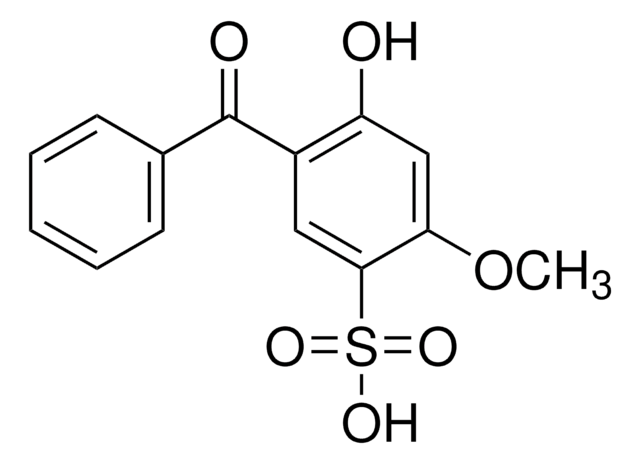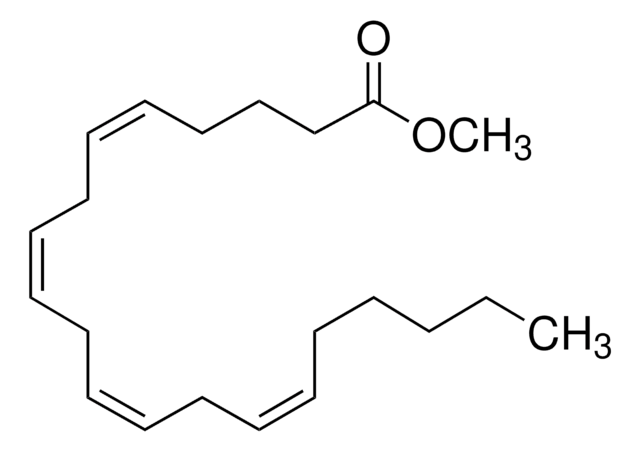SML1395
Arachidonic acid sodium salt
from Mortierella alpina, ≥98.5% (GC), waxy solid, lipid precursor
Synonym(s):
5,8,11,14-Eicosatetraenoic acid, Eicosa-5Z,8Z,11Z,14Z-tetraenoic acid, Sodium arachidonate, cis,cis,cis,cis-5,8,11,14-Eicosatetraenoic acid sodium salt, 20:4
About This Item
Recommended Products
product name
Arachidonic acid sodium salt from Mortierella alpina, ≥98.5% (GC)
biological source
Mortierella alpina
Quality Level
Assay
≥98.5% (GC)
form
waxy solid
color
white to off-white
solubility
methanol: 50 mg/mL, clear, colorless to faintly yellow
shipped in
dry ice
storage temp.
−20°C
SMILES string
O=C(O[Na])CCC/C=C\C/C=C\C/C=C\C/C=C\CCCCC
InChI
1S/C20H32O2.Na/c1-2-3-4-5-6-7-8-9-10-11-12-13-14-15-16-17-18-19-20(21)22;/h6-7,9-10,12-13,15-16H,2-5,8,11,14,17-19H2,1H3,(H,21,22);/q;+1/p-1/b7-6-,10-9-,13-12-,16-15-;
InChI key
DDMGAAYEUNWXSI-XVSDJDOKSA-M
General description
Application
Biochem/physiol Actions
Caution
Storage Class Code
11 - Combustible Solids
WGK
WGK 3
Flash Point(F)
235.4 °F - closed cup
Flash Point(C)
113 °C - closed cup
Certificates of Analysis (COA)
Search for Certificates of Analysis (COA) by entering the products Lot/Batch Number. Lot and Batch Numbers can be found on a product’s label following the words ‘Lot’ or ‘Batch’.
Already Own This Product?
Find documentation for the products that you have recently purchased in the Document Library.
Customers Also Viewed
Our team of scientists has experience in all areas of research including Life Science, Material Science, Chemical Synthesis, Chromatography, Analytical and many others.
Contact Technical Service









